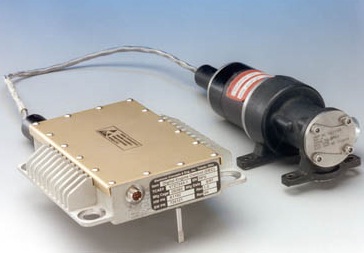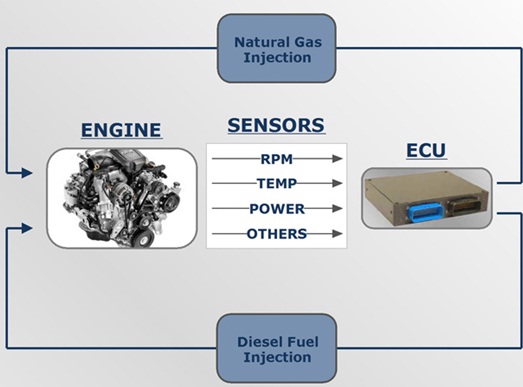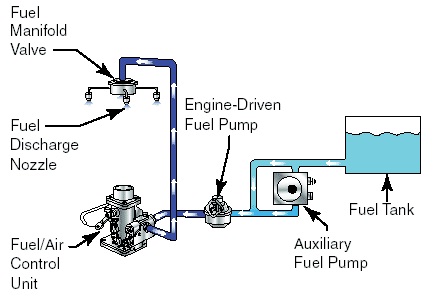





Published on Feb 14, 2025
This report describes steps and procedures necessary to achieve a successful project on Zero Human Interference on Engine Control or Full Authority Digital Engine Control (FADEC). Topics discussed include an overview of full digital engine control, what is the role of FADEC in aircraft engine performance?
How it functions and controls the engine through computer, its safety features. Its application or uses, advantages, disadvantages, technical challenges and approach are also discussed.
The report includes industry partnership with companies or government and also the ongoing research on the project. This report also presents a short history of fuel controls, some of the objectives required for a successful FADEC system, a description of some of the hardware changes to meet these objectives, and an overview of some of the operational characteristics and system protection provided.
Turbine engines provide the propulsive force for a significant percentage of modern transportation systems and are especially important as the engine for a wide variety of aircraft. Although often viewed as a mature technology, a substantial amount of resources are expended to improve these Systems because of the large impact they have on society.
The NASA program in Fundamental Aeronautics describes one such research effort and is aimed at reducing emissions, fuel burn, and noise. Separately, the Department of Defense’s Versatile Affordable Advanced Turbine Engines (VAATE) Program describes similar goals regarding fuel burn reduction with perhaps more emphasis on overall performance and reducing cost. A multitude of fundamental technologies are involved in realizing these improvements, however, many of them are only enabled or reach full potential through the use of supporting controls technology.
The newest version of a jet engine fuel control is called a FADEC - Full Authority Digital Electronic Control. The original fuel controls on early jet engines of the late 1940's and early 1950's were simply constructed and resembled a common gate valve connected to a throttle lever, Engines and controls became more sophisticated through the 1950's and 1960's, Better performance, more reliability, and increased safety became driving forces, the new electronic fuel controls will be even smarter, more precise, more accurate and more reliable than present day fuel controls and they will be with us for many years.
Full Authority Digital Engine Control (FADEC) is a system consisting of a digital computer, called an electronic engine controller (EEC) or engine control unit (EEU), and its related accessories that control all aspects of aircraft engine performance. FADECs have been produced for both piston engines and jet engines.
FADEC is a system consisting of a digital computer and ancillary components that control an aircraft’s engine and propeller. First used in turbine-powered aircraft, and referred to as full authority digital electronic control, these sophisticated control systems are increasingly being used in piston powered aircraft.
In a spark ignition reciprocating engine the FADEC uses speed, temperature, and pressure sensors to monitor the status of each cylinder. A digital computer calculates the ideal pulse for each injector and adjusts ignition timing as necessary to achieve optimal performance. In a compression ignition engine the FADEC operates similarly and performs all of the same functions, excluding those specifically related to the spark ignition process.

FADEC systems eliminate the need for magnetos, carburetor heat, mixture controls, and engine priming. A single throttle lever is characteristic of an aircraft equipped with a FADEC system. The pilot simply positions the throttle lever to a desired detent such as start, idle, cruise power, or max power, and the FADEC system adjusts the engine and propeller automatically for the mode selected. There is no need for the pilot to monitor or control the air/fuel mixture.
During aircraft starting, the FADEC primes the cylinders, adjusts the mixture, and positions the throttle based on engine temperature and ambient pressure. During cruise flight, the FADEC constantly monitors the engine and adjusts fuel flow, and ignition timing individually in each cylinder. This precise control of the combustion process often results in decreased fuel consumption and increased horsepower.
FADEC systems are considered an essential part of the engine and propeller control, and may be powered by the aircraft’s main electrical system. In many aircraft FADEC uses power from a separate generator connected to the engine. In either case, there must be a backup electrical source available because failure of a FADEC system could result in a complete loss of engine thrust. To prevent loss of thrust, two separate and identical digital channels are incorporated for redundancy, each channel capable of providing all engine and propeller functions without limitations.
An engine control unit (ECU) is a type of electronic control unit that controls a series of actuators on an internal combustion engine to ensure the optimum running. It does this by reading values from a multitude of sensors within the engine bay, interpreting the data using multidimensional performance maps (called Look-up tables), and adjusting the engine actuators accordingly.

Before ECU's, air/fuel mixture, ignition timing, and idle speed were mechanically set and dynamically controlled by mechanical and pneumatic means. One of the earliest attempts to use such a unitized and automated device to manage multiple engine control functions simultaneously was the "Kommandogerät" created by BMW in 1939, for their 801 14-cylinder aviation radial engine.

A spark ignition enigine requires a spark to initiate combustion in the combustion chamber. An ECU can adjust the exact timing of the spark (called ignition timing) to provide better power and economy. If the ECU detects knock, a condition which is potentially destructive to engines, and "judges" it to be the result of the ignition timing being too early in the compression stroke, it will delay (retard) the timing of the spark to prevent this. Since knock tends to occur more easily at lower rpm, the ECU controlling an automatic transmission will often downshift into a lower gear as a first attempt to alleviate knock.
http:\\www.howstuffworks.com
http:\\www.nasa.org
http:\\www.wikipedia.org
| Are you interested in this topic.Then mail to us immediately to get the full report.
email :- contactv2@gmail.com |